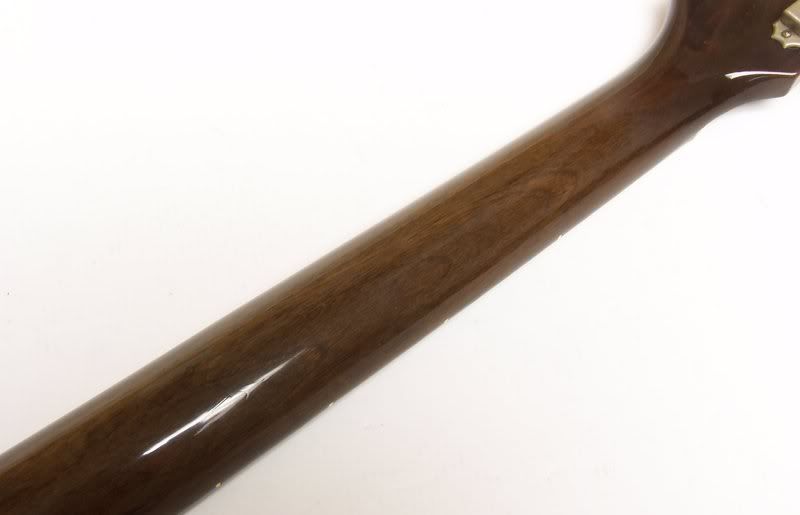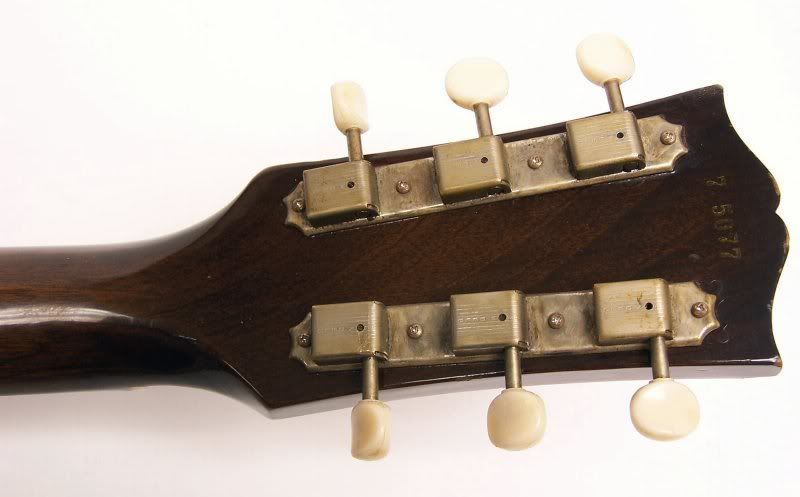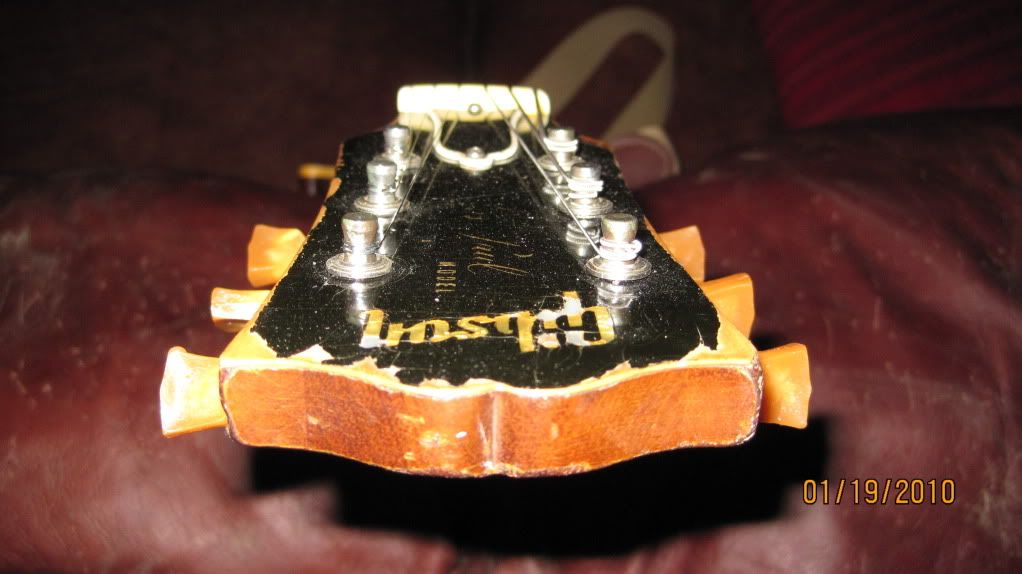You are using an out of date browser. It may not display this or other websites correctly.
You should upgrade or use an alternative browser.
You should upgrade or use an alternative browser.
Burst Necks: Flatsawn or Quartersawn?
- Thread starter wizardmc
- Start date
Jason Smith
Member
- Joined
- Nov 8, 2005
- Messages
- 237
I recommend looking at the tip of the headstock to see the endgrain. If the lines go straight up and down, it is perfectly quartersawn.
Jason Smith
Member
- Joined
- Nov 8, 2005
- Messages
- 237
I also assumed most bursts had quartersawn necks, but now that I've heard differently, I'm very interested in knowing if very many original bursts have flatsawn or rift sawn mahogany for the neck.
MapleFlame
Well-known member
- Joined
- Jul 3, 2005
- Messages
- 14,044
Very good thread, I like when a new topic comes around for educating members. I appears to me that several of the 50's necks that have been snapped by the bend of the headstock have the larger grain patterns and also seems to crack at those grains.
Jason Smith
Member
- Joined
- Nov 8, 2005
- Messages
- 237
You're right. Definitely harder to see.
That picture of your burst neck almost looks rift sawn with the grain going 45 degrees diagonal? (If those are they grain lines I think I see.)
That picture of your burst neck almost looks rift sawn with the grain going 45 degrees diagonal? (If those are they grain lines I think I see.)
DANELECTRO
Well-known member
- Joined
- Feb 24, 2003
- Messages
- 6,320
Not a burst, but my Junior has a flat sawn neck.




58burst
Active member
- Joined
- May 11, 2002
- Messages
- 2,176
My '58 (burst) is close to dead-on quartersawn.
Tom Wittrock
Les Paul Forum Co-Owner
- Joined
- Aug 2, 2001
- Messages
- 42,567
I have no knowledge on this subject. I have never been into these types of details. So, I haven't checked them for being quarter sawn or flat sawn.
But maybe you guys can answer this:
Does the angle of the headstock distort the look of the grain, compared to the rest of neck?
But maybe you guys can answer this:
Does the angle of the headstock distort the look of the grain, compared to the rest of neck?
Last edited:
BurstWurst
Member
- Joined
- Jan 24, 2008
- Messages
- 568
side view doesn't mean much. It's only the grain of the headstock "wings". Kind of tough to get a good pic. My '59.......


The left side is easy, approaching a 45 degree angle. On the right side, tiny little flames make it difficult to see that the grain on that side is consistent with what is on the left, approx 40 degrees from vertical.


The left side is easy, approaching a 45 degree angle. On the right side, tiny little flames make it difficult to see that the grain on that side is consistent with what is on the left, approx 40 degrees from vertical.
But maybe you guys can answer this:
Does the angle of the headstock distort the look of the grain, compared to the rest of neck?
Thank you TW. Yes, you can see it on the back of the headstock. As I mentioned earlier, you are neither in the same vertical nor horizontal plane as the rest of the neck, so the "cut" of the headstock should be different than the "cut" of the rest of the neck. So the examination is not analogous to Fender guitars. This is why I started out by focusing on the back of the neck itself, not the headstock. But I'm somewhat challenged when it comes to visualizing this in 3D space, so I hoped the other pics might give clues.
O
olgabowl
Guest
This is why I started out by focusing on the back of the neck itself...
Yep...
Look for the flash of medularies on your rounded neck, and the associated "dotted" pore structures...
When you find them, your grain will run exactly 90 degrees to those medularies...

It's not as easy to tell as with maple.
Yep...
But use the same tools...
The medularies are the key...
58burst
Active member
- Joined
- May 11, 2002
- Messages
- 2,176
On my guitar it's very easy to see at the heel curvature-
GeetarGoul
Active member
- Joined
- Jul 25, 2001
- Messages
- 5,044
On my guitar it's very easy to see at the heel curvature-
This is where I usually see it too. If you see straight lines running up and down the back of the neck then it's quartered (or close to it) and if you see more topographic figuring then it's more flat cut.
shuie
New member
- Joined
- Aug 26, 2005
- Messages
- 3,480
So, what does any of this mean?
O
olgabowl
Guest
Olgabowl - why is there that twisting sort of grain? You can see it really well on my '53 GT pic above.
That looks like twist that existed in the tree itself...
Kinda like twist-caused runout in a spruce top...
My hunch is that it's just a neck cut slightly across the grain, nothing more, right? Why would they do that? To maximize the number of necks out of a piece of wood?
I've seen that too, but your's looks like twist...
It might be my imagination, but doesn't it straighten out on the peghead??
So, what does any of this mean?
Well, judging by the number of snapped pegheads on these instruments, I would say that grain orientation is way more important on a LP than on, say, a Fender....



